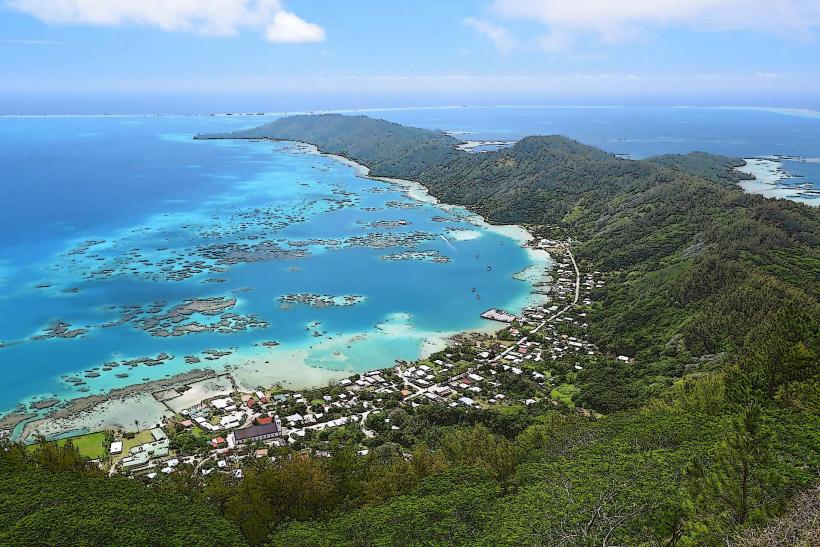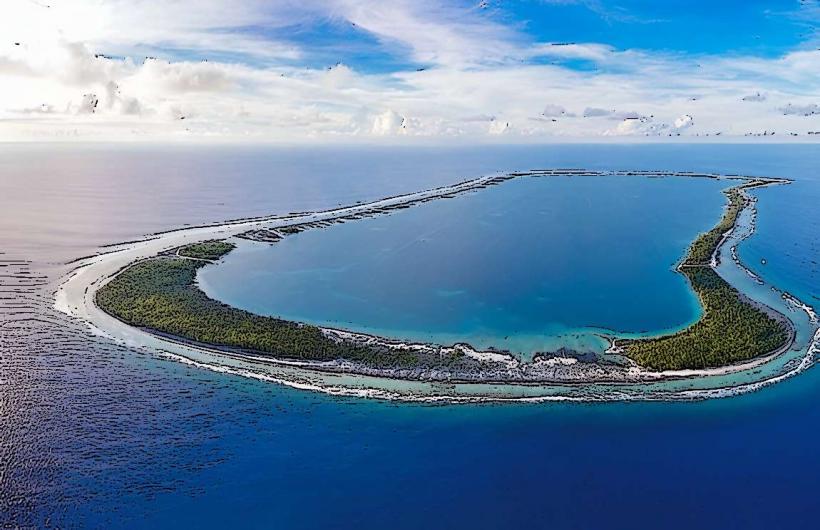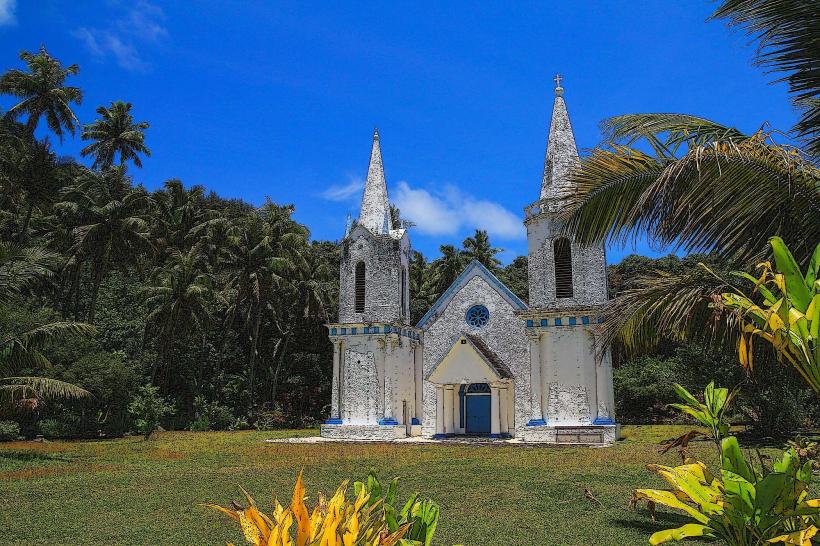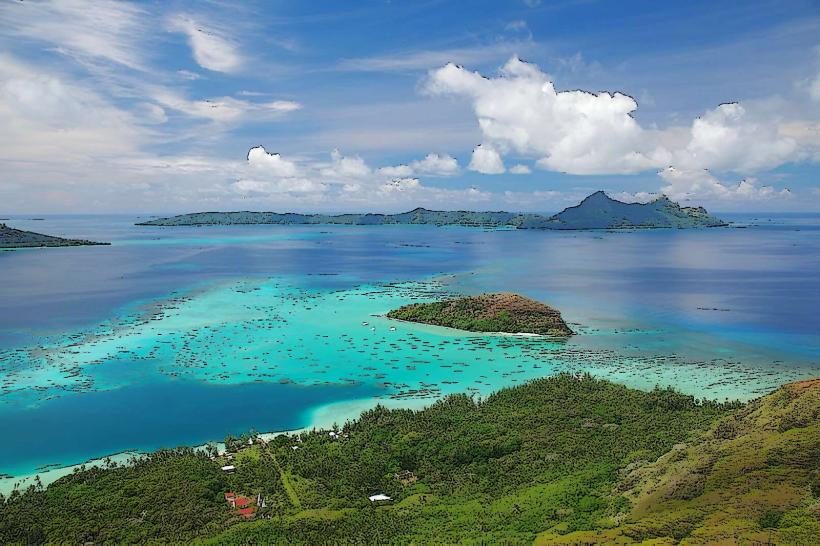Information
Landmark: Gambier Pearl FarmCity: Gambier Islands
Country: French Polynesia
Continent: Australia
The Gambier Pearl Farm is a prominent pearl farming operation located in the Gambier Archipelago, specifically on Mangareva Island in French Polynesia. This farm is known for producing high-quality black pearls, which are highly prized for their stunning iridescent colors and unique beauty. The Gambier Archipelago is one of the world’s foremost regions for pearl cultivation, and the Gambier Pearl Farm plays a key role in this industry, which is vital to the local economy.
Key Features of the Gambier Pearl Farm:
Black Pearl Cultivation:
- The Gambier Pearl Farm specializes in the cultivation of black pearls produced by the Pinctada margaritifera oyster, also known as the black-lipped oyster. These oysters are native to the warm, clean waters of the Gambier Archipelago.
- Black pearls are famous for their deep, rich colors, ranging from dark blue, green, and purple to the rarest jet black. The Gambier Archipelago is renowned for its ideal conditions for pearl farming, which include pristine waters, calm lagoons, and a stable environment.
Pearl Farming Process:
- The process of cultivating pearls at the Gambier Pearl Farm involves several stages. First, oysters are selected and carefully nurtured in the farm’s underwater nurseries. Nucleation, which is the process of inserting a tiny bead or nucleus into the oyster to stimulate pearl formation, takes place after the oysters have matured.
- Over a period of 18 months to 3 years, the oysters secrete layers of nacre (mother-of-pearl) around the nucleus, eventually forming a pearl. The farming process requires careful monitoring and attention to ensure the oysters remain healthy and the pearls grow to the desired size and quality.
- Pearls from the Gambier Pearl Farm are highly regarded for their luster, shape, and the unique color variations that occur due to the special conditions in the Gambier Archipelago.
Environmental Sustainability:
- The Gambier Pearl Farm operates with a focus on environmental sustainability. Pearl farming is a relatively low-impact industry compared to other forms of aquaculture because it does not involve the use of chemicals or large amounts of feed. The oysters naturally feed on plankton in the water, contributing to the health of the marine ecosystem.
- Efforts are made to minimize the impact on the local environment by ensuring that the pearling operations do not disturb the delicate balance of the marine life in the region. The farm also participates in ongoing research to improve the sustainability of the industry and protect the surrounding coral reefs and marine habitats.
Economic and Cultural Importance:
- Pearl farming is an essential part of the economy on Mangareva Island and throughout the Gambier Archipelago. It provides employment for local residents and supports a number of industries, from pearl jewelry making to tourism.
- The pearls produced at the Gambier Pearl Farm are highly valued on the global market, and the farm is a significant contributor to French Polynesia’s pearl export industry. In addition to providing economic benefits, pearl farming also contributes to the preservation of Polynesian traditions, including the craftsmanship of pearl jewelry and the cultural significance of pearls in the region’s history.
**Visiting the Gambier Pearl Farm:
- Visitors to Mangareva Island and the Gambier Archipelago can visit the Gambier Pearl Farm to learn more about the fascinating process of pearl cultivation. Guided tours of the farm often include demonstrations of the nucleation process, as well as information about the life cycle of the oysters and how the farm operates.
- Visitors can also purchase high-quality black pearls directly from the farm, often with the opportunity to see the pearls being harvested and processed into jewelry. Many visitors also enjoy scenic boat rides around the lagoon, where the farm’s operations take place, giving them a chance to see the beauty of the island and its surrounding waters.
Pearl Jewelry and Local Artisans:
- Gambier pearls are used to create beautiful jewelry, which is a popular souvenir for tourists visiting the island. Local artisans on Mangareva and other islands in the Gambier Archipelago specialize in creating exquisite pearl jewelry, often incorporating the region’s cultural and artistic traditions into their designs.
- The island’s jewelry makers create a range of items, from necklaces and earrings to bracelets and rings, all featuring the iconic black pearls. The pearls’ varied colors and hues make each piece unique, and the craftsmanship of local artisans ensures that the jewelry is of the highest quality.
Best Time to Visit:
- The best time to visit the Gambier Pearl Farm is during the dry season (from May to October), when the weather is pleasant and ideal for exploring the island and its surroundings. The wet season (from November to April) can bring more rainfall, but the farm is open year-round to visitors.
Conclusion:
The Gambier Pearl Farm is an integral part of Mangareva Island’s and the Gambier Archipelago’s identity. Its role in producing high-quality black pearls is crucial to the region’s economy, culture, and tourism. Visitors can explore the fascinating process of pearl cultivation, learn about the farm’s sustainable practices, and even purchase exquisite jewelry as a reminder of their trip. Whether you are interested in the intricacies of pearl farming, the unique beauty of the black pearls, or the cultural significance of the industry, the Gambier Pearl Farm offers a captivating experience in one of the most remote and beautiful corners of the world.






